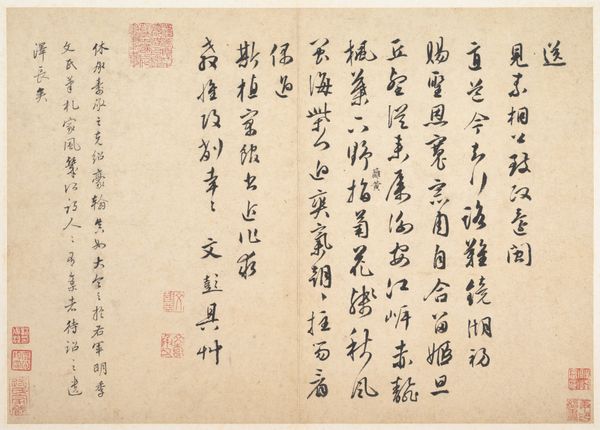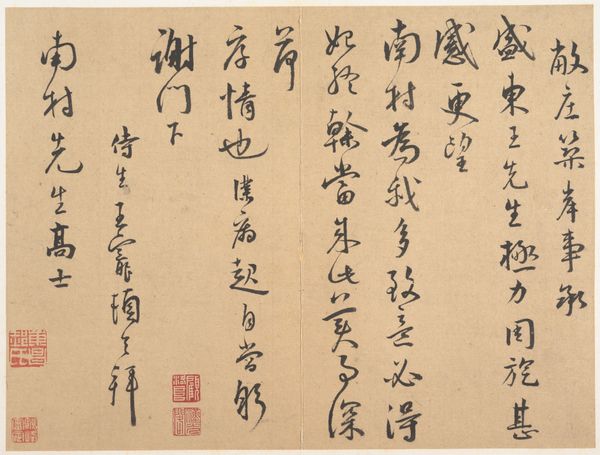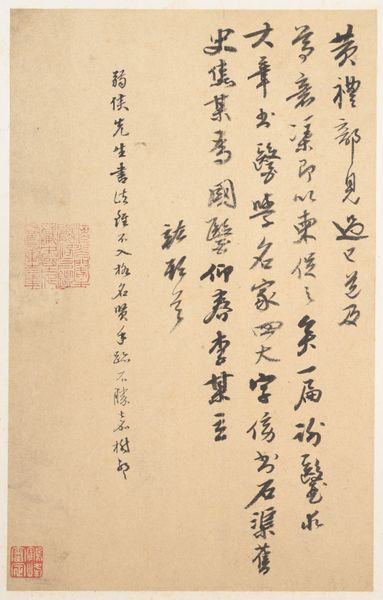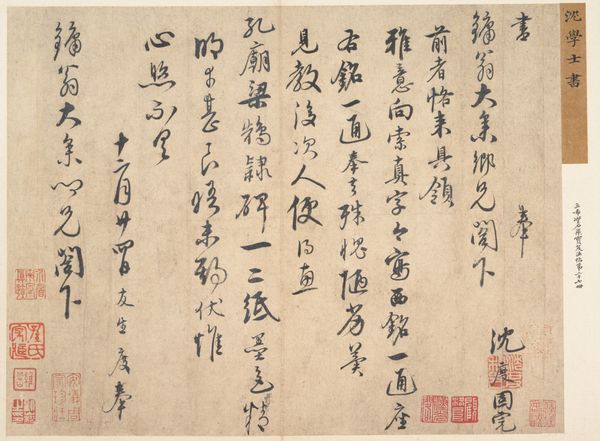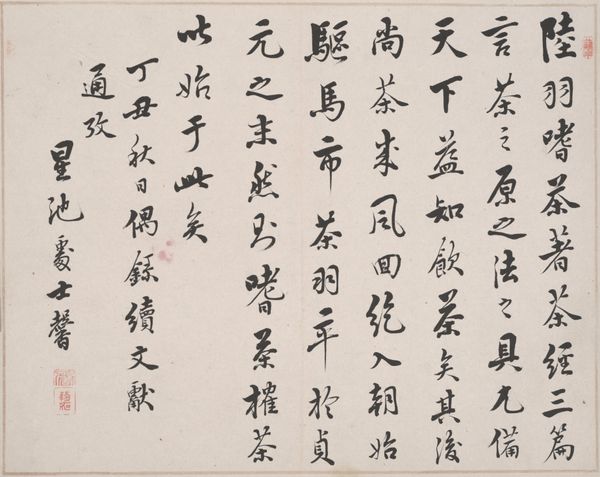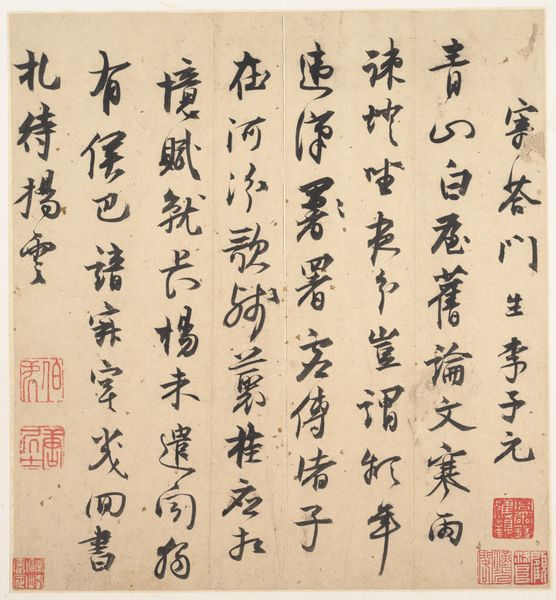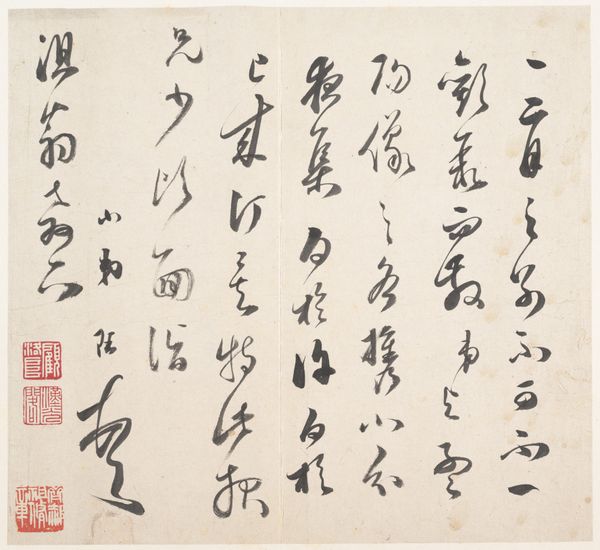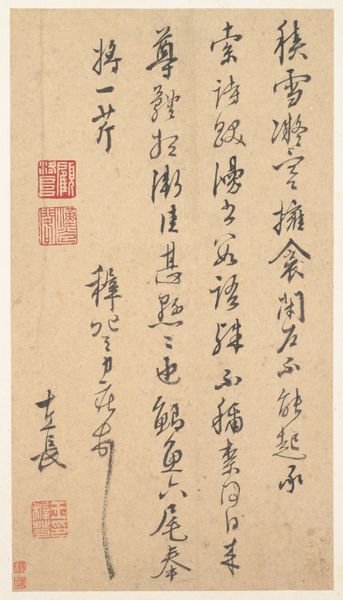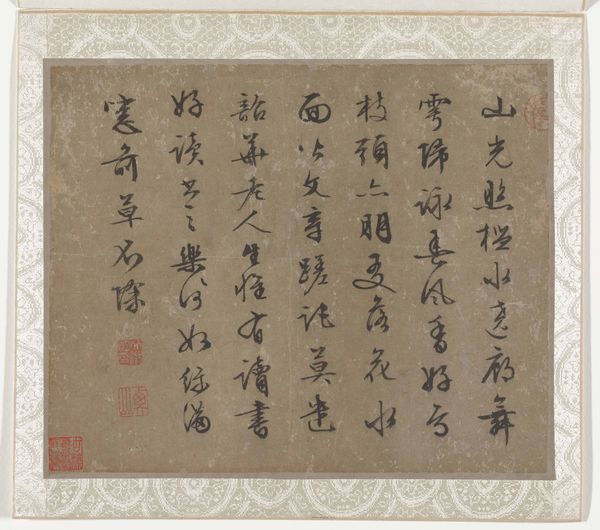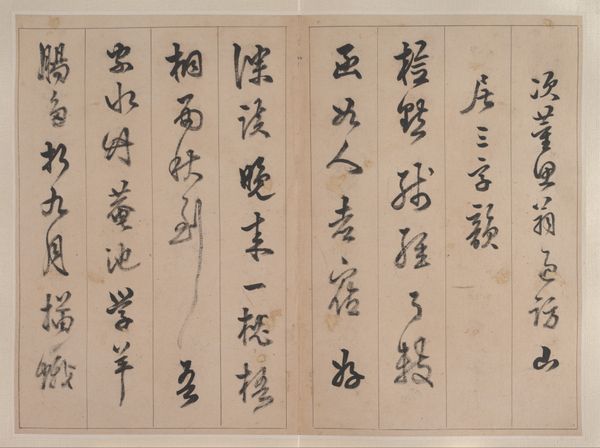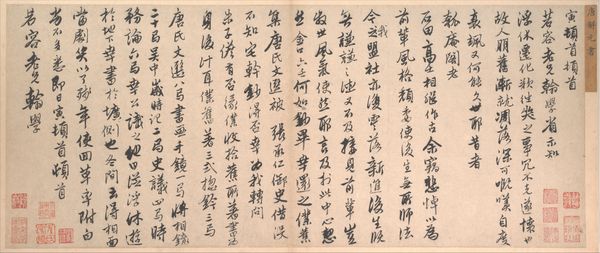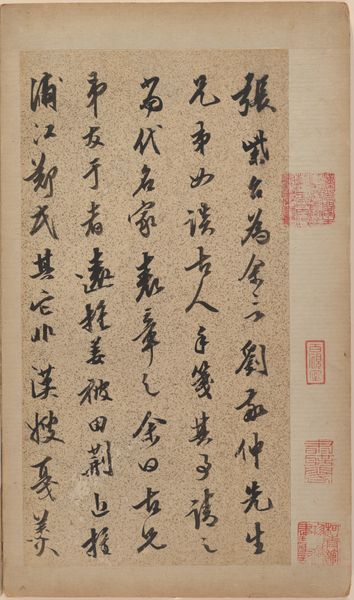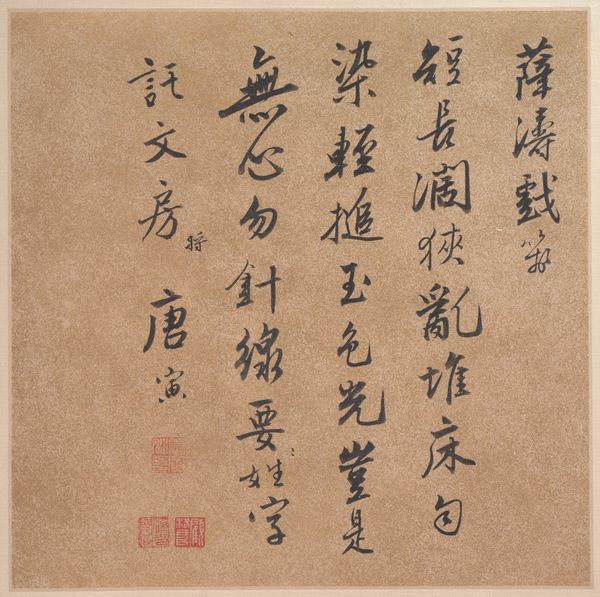
drawing, textile, paper, ink
#
drawing
#
asian-art
#
textile
#
paper
#
22_ming-dynasty-1368-1644
#
personal sketchbook
#
ink
#
china
#
calligraphy
Dimensions: 9 1/16 x 9 1/16 in. (23 x 23 cm)
Copyright: Public Domain
Editor: This is "Letter to Chen Jiru," a work of calligraphy by Dong Qichang, created sometime between 1555 and 1636, during the Ming Dynasty. It's ink on paper, and looking at the flowing script gives me a sense of intimacy, like eavesdropping on a personal conversation. What stands out to you in this piece? Curator: It's fascinating how script transcends simple communication. Calligraphy, especially in Asian art, is a potent visual symbol laden with centuries of cultural weight. Think of the brushstrokes, each one a conscious act, carrying the artist’s emotional and intellectual state. What do you see in the relationship between the characters themselves, their form and the overall feeling they evoke? Editor: The characters vary in size and density, and seem very fluid, expressing a personal connection. It's interesting to think each stroke conveys emotion, or even a fleeting thought. Do you think the intended recipient, Chen Jiru, would read different emotional cues from this piece than a contemporary museum visitor? Curator: Absolutely. Chen Jiru would immediately recognize the calligraphic style as a reflection of Dong Qichang's artistic identity and his place within the scholar-official class. They would recognize not just the literal message, but also the subtle cues indicating respect, urgency, or intimacy. In this exchange of letters, calligraphy reinforces their shared understanding and cultural memory. The seals also root this into cultural history. How would those relationships have changed over time, say between then and now? Editor: It’s amazing to think of all that encoded cultural knowledge contained within these brushstrokes, and I'm just beginning to glimpse it! Curator: Indeed! And this encoding also opens interesting questions for how calligraphy lives in contemporary artmaking. I, too, am left seeing so much potential in bridging these seemingly different contexts.
Comments
No comments
Be the first to comment and join the conversation on the ultimate creative platform.
